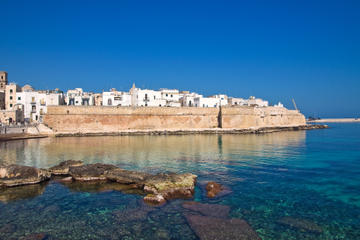Bari
TIME : 2016/2/22 11:38:38

Bari
As the capital of Puglia, Bari has been the region’s premier trading port since pre-Roman times and has a somewhat checkered history. It passed from the Romans to the Saracens, fell to the Byzantine Empire and subsequently was invaded by the Normans in the 11th century. This turbulent past is reflected in the range of architectural styles on show in Barivecchia, the city’s historic heart overlooking the Adriatic Sea. Once the preserve of petty crime and run-down housing, the barrio is now a buzzing little ghetto shaded by tall, slender houses built on such a slant they nearly touch balconies high over the tangle of alleyways. Alongside the thriving clubbing, bar and restaurant scene, the austere grandeur of the Romanesque Cattedrale di San Sabino and the Basilica di San Nicola – which contain the remains of St Nicholas, better known as Santa Claus – combine with the hulking, fortified walls and bastions of Castello Normanno-Svevo to give a hint of Bari’s former significance in history.
Today it is once more the major city of southern Italy and many people arrive via the cruise port, a 20-minute hike from Barivecchia and the designer stores of Via Sparano da Bari in the modern city. Elegant Piazza Mercantile, with its clash of Romanesque and Baroque buildings, is the spot for lunch and people watching, while soccer fans might care to visit the futuristic Stadio San Nicola, designed for the 1990 World Cup by Renzo Piano and found out of the city center towards Bitritto.
Practical Info
As well as its cruise port, Bari is easily accessed from its own Karol Wojtyła airport and the airport at Brindisi 90 minutes away. Also, three train stations serving Puglia converge on Piazza Aldo Moro, where the tourist office is also found.
